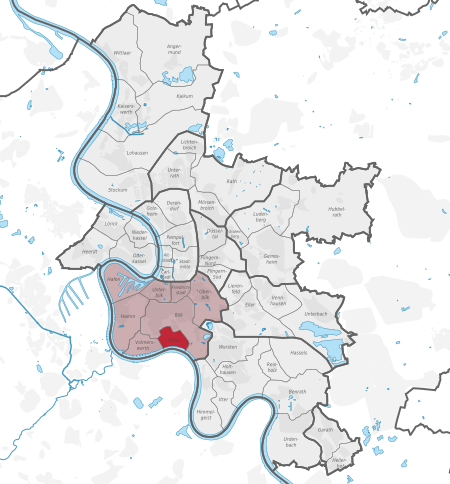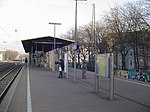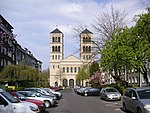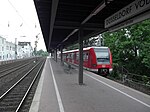Düsseldorf-Flehe

Flehe is a part of Düsseldorf, Germany, that lies directly on the river Rhine and is bordered by Volmerswerth, Himmelgeist and Bilk. The name Flehe probably comes from the Central German (Mitteldeutsch) word flet meaning a stream. Flehe became a part of Düsseldorf in 1384, and was first mentioned in documentary records in 1402. Flehe is a small and relatively sparsely populated part of Düsseldorf. The area from the center of Flehe to the Rhine has a more village-like rather than metropolitan character. A filtration plant in Flehe purifies water from the Rhine for use as domestic drinking water. This article is based on a translation from the German Wikipedia.
Excerpt from the Wikipedia article Düsseldorf-Flehe (License: CC BY-SA 3.0, Authors, Images).Düsseldorf-Flehe
Am Scharfenstein, Dusseldorf Flehe (Stadtbezirk 3)
Geographical coordinates (GPS) Address Nearby Places Show on map
Geographical coordinates (GPS)
| Latitude | Longitude |
|---|---|
| N 51.1925 ° | E 6.7691666666667 ° |
Address
Am Scharfenstein 22
40223 Dusseldorf, Flehe (Stadtbezirk 3)
North Rhine-Westphalia, Germany
Open on Google Maps








